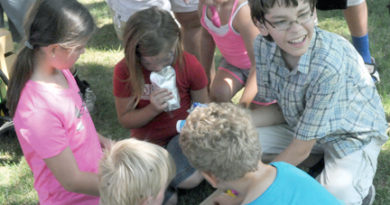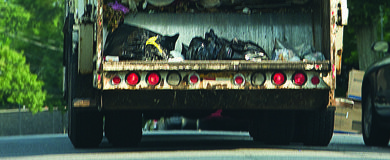Use Caution Caring for Storm-damaged Trees
LINCOLN, Neb. — This week’s snow storm brought unusually cold temperatures and heavy snow and ice that can cause damage to trees. Eric Berg, community forestry and sustainable landscapes program leader at the Nebraska Forest Service, urges homeowners to use caution and follow a few tips when caring for storm-damaged trees.
– Safety should be the priority at all times. Use caution in and around trees during and after extreme weather as falling limbs and debris may pose a hazard long after the storm has passed.
– When inspecting trees for storm damage, look for splits or cracks in the trunk and major limbs, as well as disturbed soil around the trunk. This indicates a possible structural problem. If you suspect your tree sustained structural damage, contact a certified arborist.
– Never climb a damaged tree to remove limbs or attempt any type of clean-up on a tree that is leaning or has a split trunk or branches. These tasks are best left to certified arborists.
– Never remove or trim branches that are interfering with power lines. Instead, contact your local power company.
– When removing fallen branches under the tree’s canopy, watch for falling ice and limbs.
– Wait for the ice and snow to melt before pruning damaged branches that can be reached from the ground.
– Be wary of individuals who go door-to-door soliciting your business. Reputable tree-care companies are typically too busy to do this.
– Say “no thank you” to anyone who offers to top your tree. Professional foresters and certified arborists agree that topping harms trees and increases the likelihood of structural problems, as well as a tree’s recovery time after a storm.
– Check staking and guying materials around newly planted trees. With high winds associated with winter storms, many young trees may need to be straightened and restaked to stabilize the root ball and prevent further damage.
– It is not too early to begin planning to replant trees destroyed by storms. ReTree Nebraska, a 10-year effort to plant and properly maintain 1 million community trees by 2017, provides resources for tree selection and planting assistance.
Find more information about caring for storm-damaged trees and proper tree care on the Nebraska Forest Service website: http://nfs.unl.edu/treecare.asp.
For more information about ReTree Nebraska, visit www.retreenebraska.unl.edu.
To locate a professional arborist in your area, visit the Nebraska Arborists Association Web site at www.nearborist.org or the International Society of Arboriculture Web site at www.isa-arbor.com. The Nebraska Forest Service is a part of the University of Nebraska.


